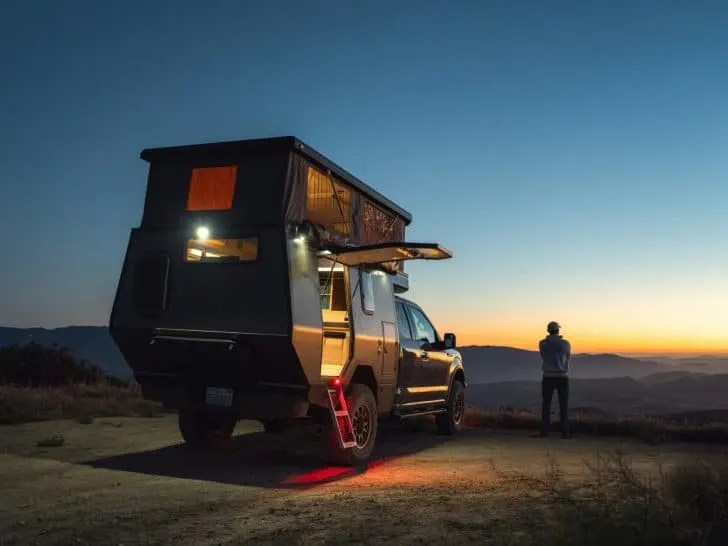You don’t realize how big the world is until you explore it. However, the demands of modern life rarely leave sufficient time for slaking wanderlust. Those fortunate enough to get a paid vacation too often spend it catching up on all the things they pushed aside while working. What if you didn’t have to decide between keeping house and exploring?
Overlanding is much more than an extended vacation. It’s a lifestyle and a commitment to exploring the world on your own terms, without the mountains of fixed possessions that tie so many down to one place.
It requires a unique mindset and a revolutionary spirit but offers unparalleled freedom and opportunity for self-reflection and development. What is overlanding, and how can beginners get started?
What Is Overlanding?
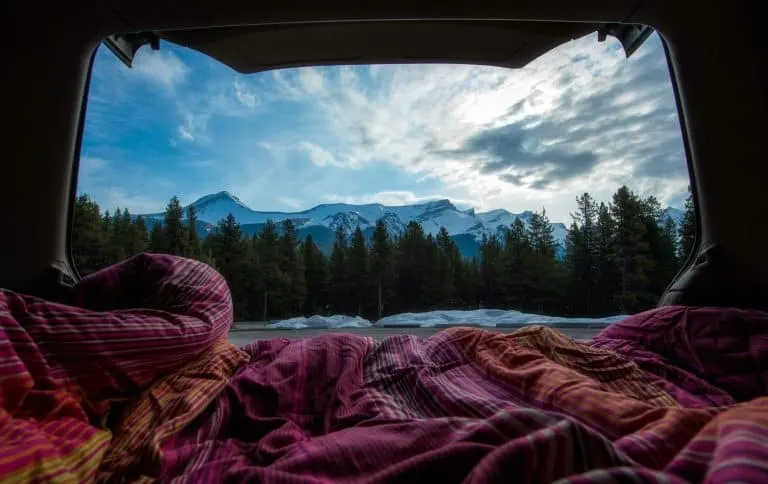
While many people interpret the term “overlanding” quite broadly, the general definition of overlanding is self-reliant travel to remote destinations where the journey is the principal goal and camping is the primary form of lodging.
It can last months, even years, and eschew boundaries. Essentially, overlanding involves voluntarily giving up your home and most material possessions and choosing a nomadic lifestyle.
Of course, there’s a lot of leeway in that definition. Some folks are privileged enough to maintain a steady home base while pursuing life on the road, which helps immensely with logical matters.
For example, you need a residential address simply to establish a PO Box, making it hard to get mail if you go full nomad. Without an address, it’s tough to find work in a world of online applications with required fields.
However, many retain ties with family or friends back home while engaging in the overlander lifestyle. Some find workarounds, like virtual address services. Others simply decide that they would rather chance living life on their own terms, similar to Christopher McCandless in Into the Wild. What unites them all is a desire to discover who they are beyond the trappings of society and its many rules for human roles.
Why Has Overlanding Become More Popular?
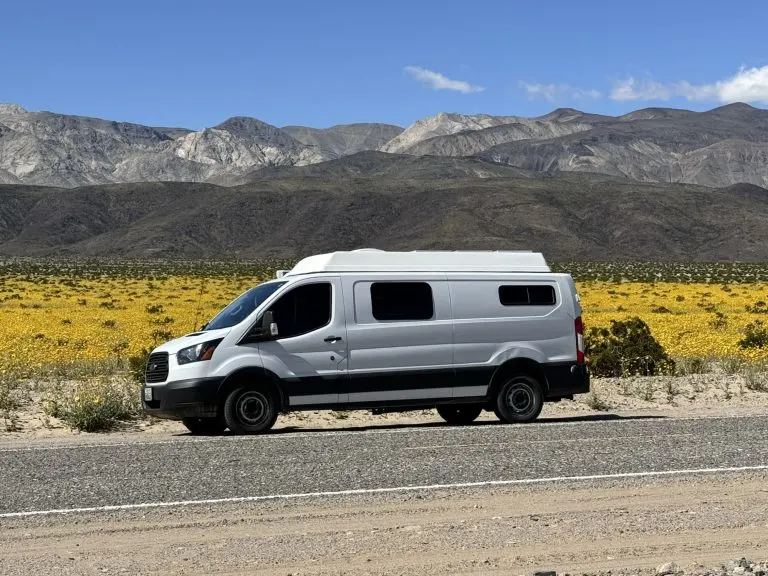
Several factors have collided to make overlanding more popular. One is the rise of technological solutions that keep people connected nearly anywhere.
Tools such as satellite internet for RVs let overlanders work remotely, providing adequate income for supplies like gasoline, tools for vehicle maintenance, food, water and hygiene. Even overlanders with little more than a cellphone can use it to find temporary work in exchange for the necessities.
Another contributing factor is the rising price of housing. Rent takes up 30% of the average income of many people — a situation that simply isn’t sustainable when you must also pay for utilities, insurance, food, and medical and child care. Although overlanding isn’t necessarily inexpensive, many see it as the only realistic way to escape the endless roller coaster of working simply to pay bills, never getting ahead.
Is Overlanding Dangerous?
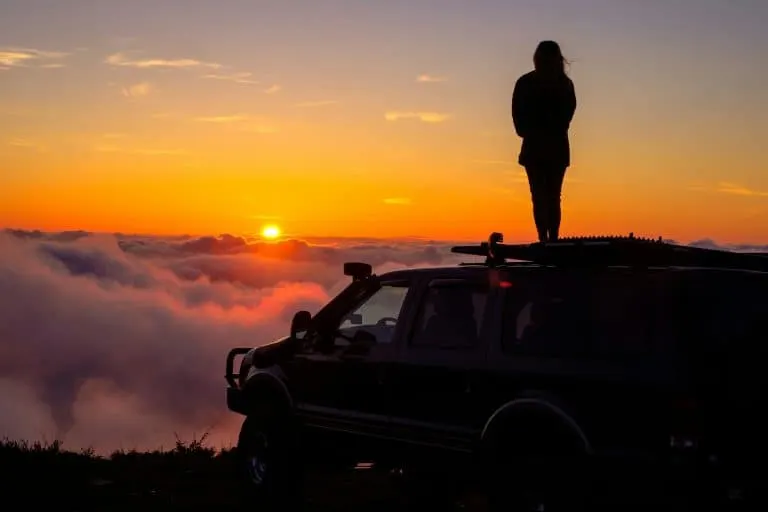
Many overlanders will retort, “Yes, but life is inherently dangerous,” which has a degree of truth. While sleeping in even the best appointed vehicle is less secure than a permanent home, the risks aren’t as great as “scary story” podcasts lead many to believe. If a situation gets hairy, you can easily move on to a safer location.
Still, those considering overlanding should remain vigilant of the following risks:
- The elements: Exposure to the elements without sufficient protection can be fatal. The right gear is essential, as weather extremes can occur even in historically mild climate zones.
- Wildlife: Although not as big a risk as many fear, bears can break into vehicles, and critters such as cougars and snakes also pose hazards.
- Other people: This danger isn’t as acute in the wild — criminals tend to go where they can find victims, not hang out in the middle of nowhere. However, it is a risk, and going into town for supplies can mean experiencing prejudice, even violence, from those who don’t understand the lifestyle.
Many overlanders consider the risks of remaining in civilization more dangerous than those on the road. They’d rather take their chances with the bear than leave their life to the capricious whims of an employer who could let them go at any time or landlords who can double their rent without a care.
Plus, overlanding provides what civilization never can — freedom to wander. It’s the chance to see way more of the world than you ever could during annual two-week vacations, even if you don’t use your PTO for catching up on household chores.
Modern day people with the souls of the early explorers — or maybe Huck Finn lighting out for the territories — can experience true independence from the slings and arrows of modern life. They have faith in themselves, their abilities and that the road will provide.
Overlanding for Beginners
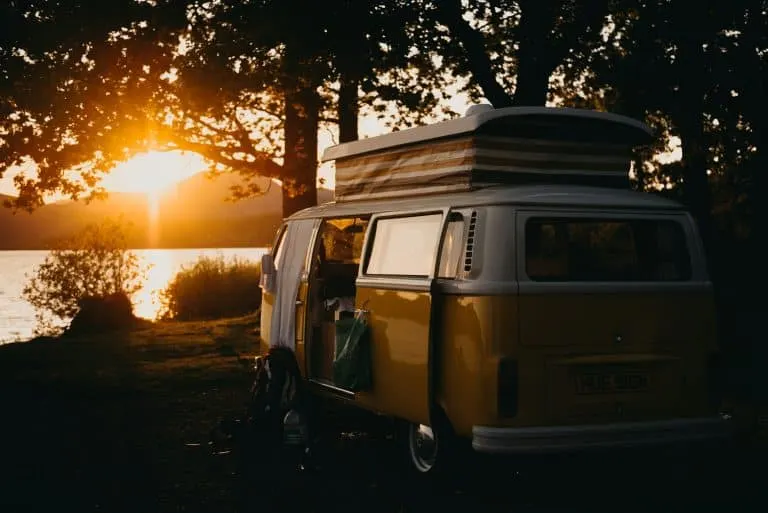
You’ve dreamed of the nomad life as long as you can remember, and you’re ready to embark on the overlanding lifestyle. What must you have and need to know to make the most of overlanding for beginners? Use the below checklist as your guide.
1. Plot Your Course and Locate Necessities
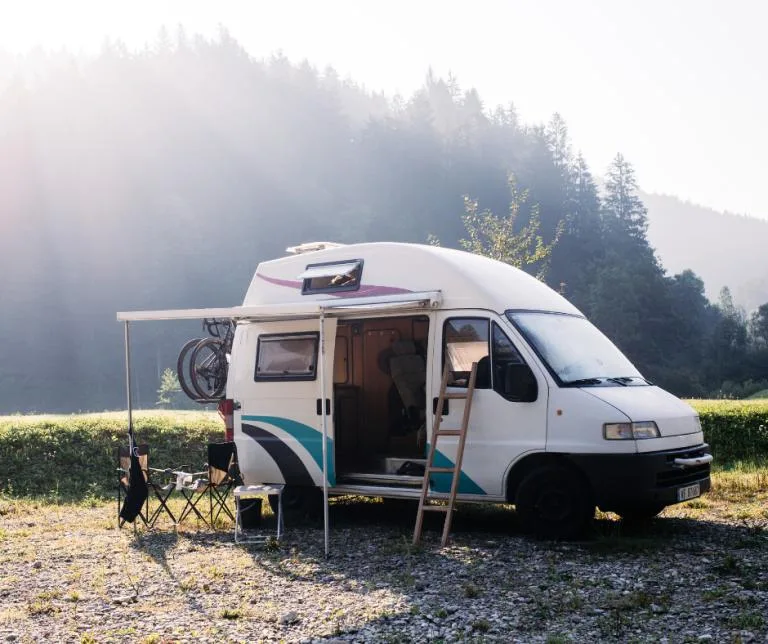
Rather than a once-and-done itinerary, you’ll need to undergo this step each time you move on to a new place. Your first priority is a safe place to sleep.
While you can find ample public land in the West, it’s often far from the nearest cell tower. Easing into the overlander lifestyle may mean sticking with established campgrounds until you scout free prime locations that work for your needs. It also gives you time to earn your “sea legs” while plenty of other folks remain nearby to help.
Even on public land, you’ll need to follow the rules, typically moving every two weeks, which means repeating the process anew.
Furthermore, you’ll need to venture into civilization from time to time for supplies, which can sometimes mean an overnight or two in town. Learn where you can park for a while to sleep. Some common places are:
- 24-hour gyms: Nationwide chains like Planet Fitness and Anytime Fitness are worth joining for access to a warm shower alone. Truck stop showers often cost $16 or more per session, and not all allow non-truckers.
- Certain retailers allow overnight camping: Some businesses — such as 24-hour Walmarts, Cabelas, Bass Pro Shops and Cracker Barrel restaurants — allow overnight parking. Courtesy demands checking with the specific establishment, as some franchises have their own rules.
- Truck stops and rest stops: As with retailers, availability varies by establishment — ask first and never park in the trucker’s spots.
Your biggest necessity is water. While the West abounds with public land, not much of it is wet. A water filtration system is an absolute must for getting an adequate supply in the wild, although you should reserve it for emergencies, not make it your sole resource. You’ll need plenty of large, clean bottles for drinking and washing your clothes, dishes and yourself.
2. Prepare Your Vehicle and Learn Basic Maintenance
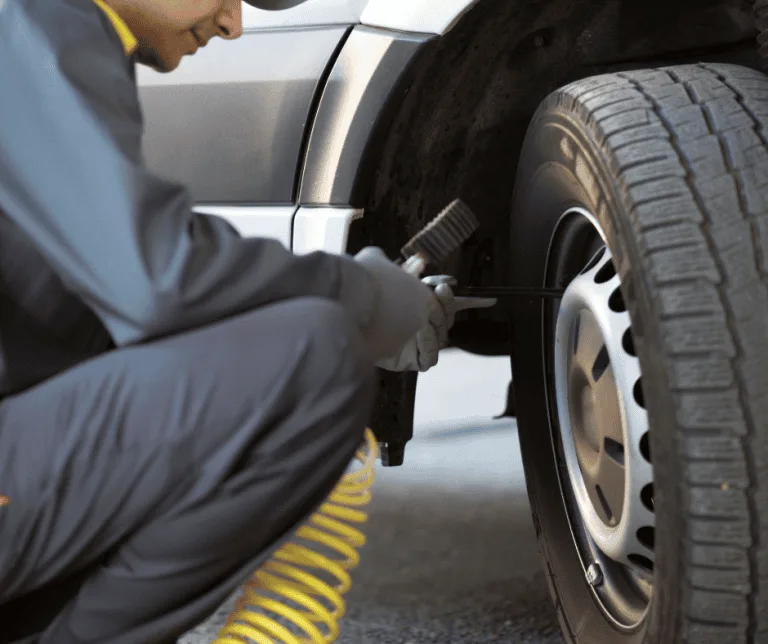
Does your vehicle have adequate suspension to traverse rocky terrain? Does it have skid plates to avoid ripping out your oil pan or transmission on a jagged stone? Do you know how to change a tire on the fly and diagnose why your truck won’t start?
Although some overlanders go truly rugged, traveling primarily by bicycle, most use a larger vehicle to carry their belongings.
Those working online need shelter for their electronic equipment, and many people prefer something more secure than a tent, even if they occasionally enjoy sleeping under the stars. However, you won’t have a regular mechanic you trust — knowing how to DIY minor issues is a must.
3. Get Smart and Minimalist With Your Gear
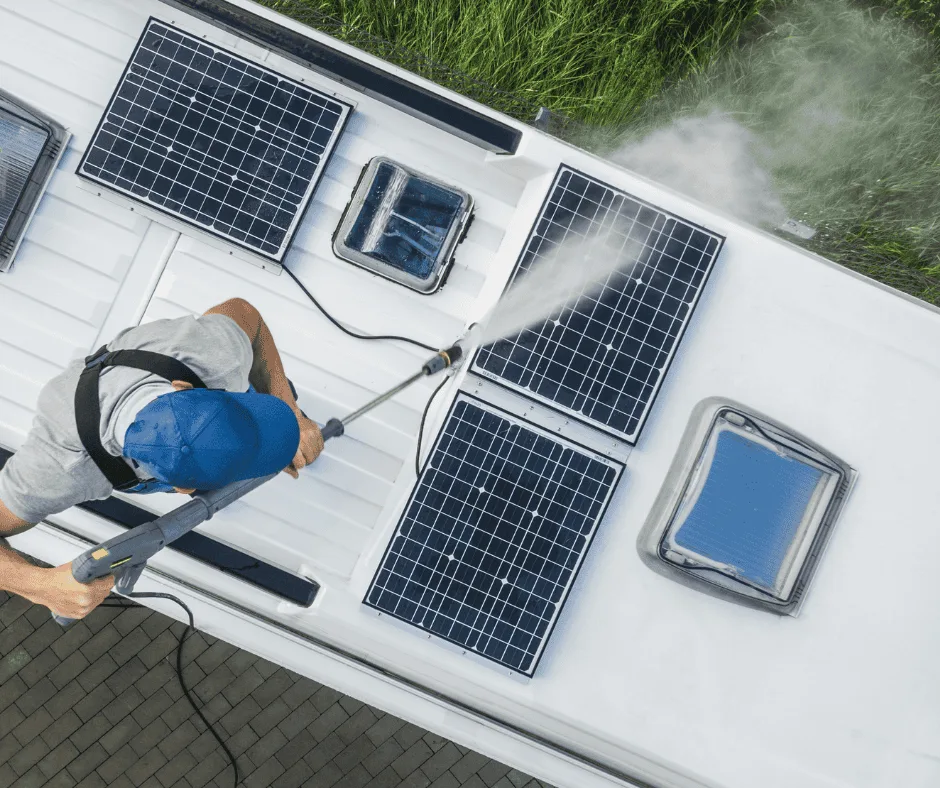
The right gear is everything when overlanding. It can be the deciding difference between an adventure and a nightmare.
It bears repeating that securing your water supply is a must. Another requirement is heat and access to shade in hot climates.
Even if you overland in an RV with a kitchen, you should have fire-making supplies, including a flint and steel in case things get wet. Additionally, you’ll need a mess kit for preparing your meals, whether over a stove or open flame.
How can you maintain a consistent temperature? You have a few options:
- Some hybrid SUVs allow you to run climate control when necessary without engine power, although it may require you to charge your battery more often.
- Solar generators such as a Jackery kit allow you to run a small heater or fan.
- Believe it or not, some folks install woodstoves in their RV or van.
- Of course, there’s nothing wrong with huddling under piles of blankets and warm winter clothes, although it can make things a bit uncomfortable when nature calls and you must leave your cozy den.
Additionally, you’ll need the following:
- Copies of legal documents, including your identification, proof of insurance, social security cards and banking information: Electronic copies are best to prevent loss or damage.
- A first aid kit and a way to get any medications you need: Jase Case provides several months of many prescriptions, excluding controlled substances, but getting refills could otherwise be problematic. Also, health insurance doesn’t always cross state lines, crucial to know if you have health conditions that require regular treatments.
- Tools: Bring roadside emergency supplies like triangles, flares, a spare tire and jack, assorted wrenches, pliers and screwdrivers, a mallet, head lamp, spare engine oil and radiator fluid and anything specific to your vehicle.
- Hygiene supplies: Take biodegradable soap and dental hygiene products.
- Clothes: Grab at least one clean spare change of clothes for going into town and washing the other.
Finally, keep in mind you must fit everything you own into your ride. Therefore, get minimalist. Take the essentials, but go light on extras. You can pick up any nonessential items on the road, so stick to the basics.
4. Create a Safety Plan
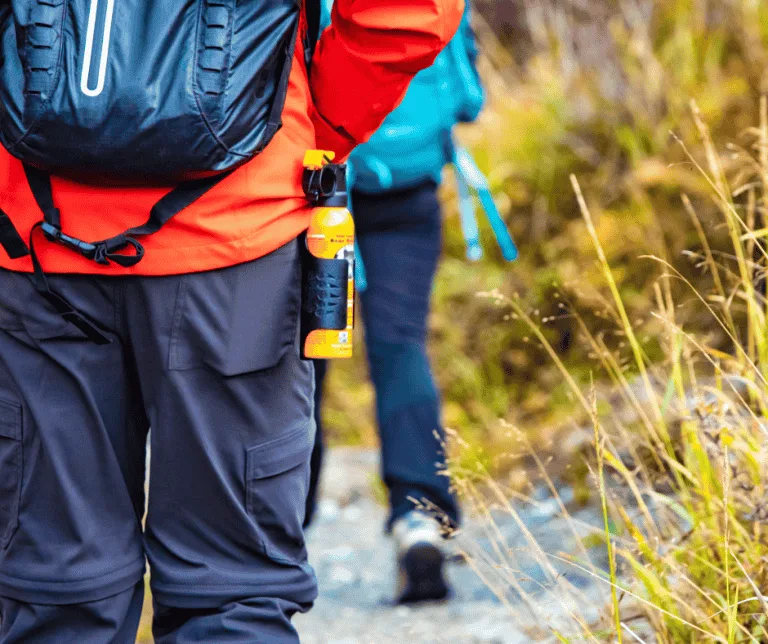
A safety plan is a must, especially if overlanding solo. Although it may seem to cramp your wanderlust style, establishing regular check-ins with someone in civilization is essential if you want people to know where to look for you if an emergency arises. A simple text message is enough, although a video call is even more secure.
You’ll feel more comfortable if you know how to defend yourself. That alone keeps you safer, as criminals prey on easy targets — and your confidence will give them pause. It’s helpful to know martial arts. If you choose to carry a weapon, practice with it so you know how to operate it under pressure. This rule includes bear spray, as they make blank cartridges for this purpose.
Furthermore, practice good situational awareness. Before parking at a new site, investigate the surrounding area and identify potential hazards. For example, trees provide shade but could come crashing down on your ride or tent in a storm. Trust your gut — if something seems off, move on.
5. Arm Yourself With Apps
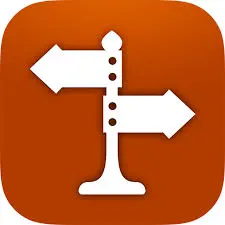
The right apps can make locating what you need much easier. Two of the best are iOverlander and Trucker’s Path. Additionally, navigational apps like Waze make finding your way in unfamiliar towns easier when you must stock up on supplies.
6. Test Your Tech — and Everything Else
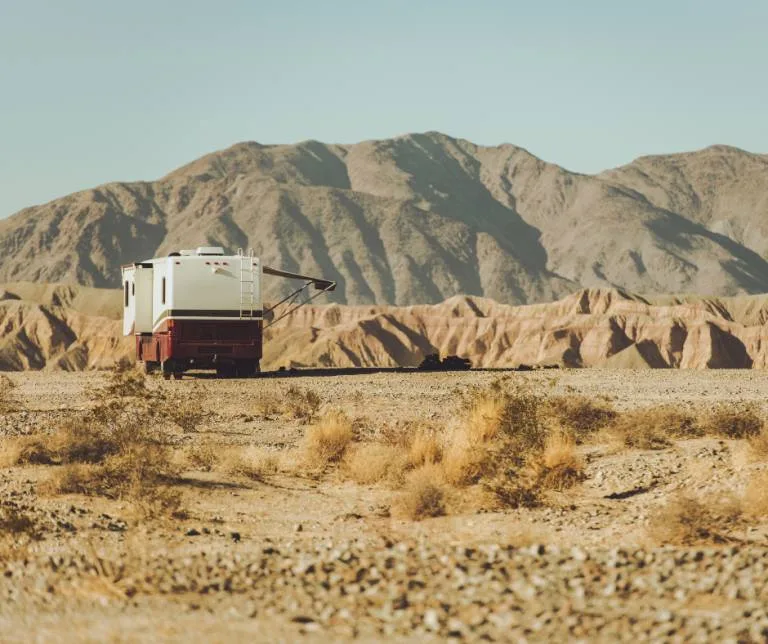
Before you take off on an extended overlanding journey, take a few trial runs first. Try spending a week or two in a nearby campground. What problems do you encounter with your ride, finding supplies or staying comfortable?
Next, go boondocking for two or three weeks. You’ll quickly discover what works and what still needs improvement before calling your car or camper your home.
The Best Overlanding Vehicle
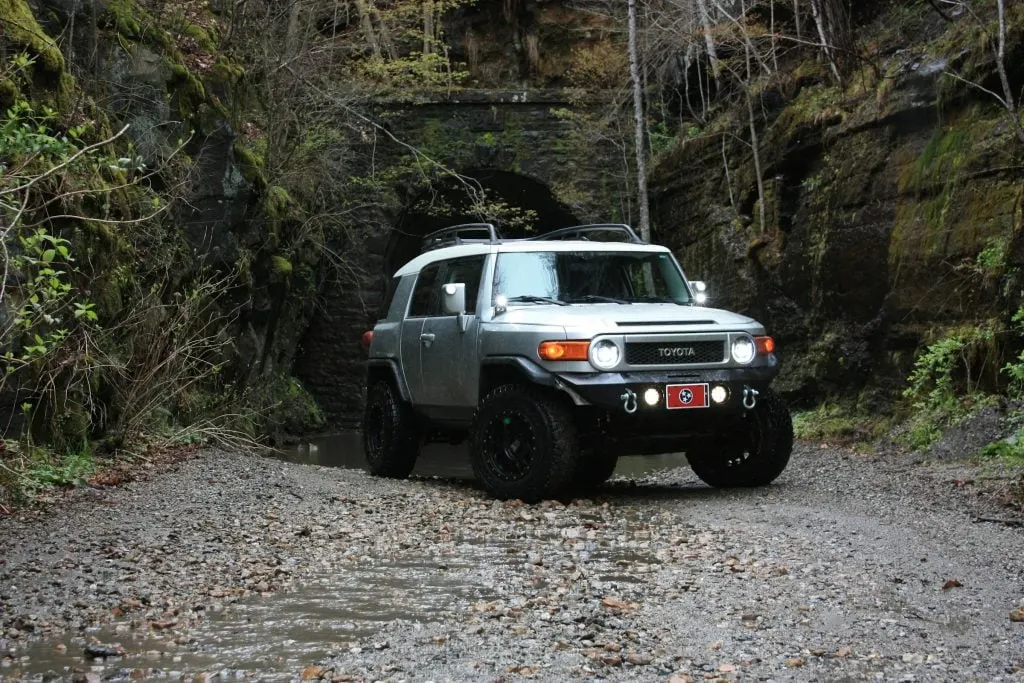
The best overlanding vehicle depends on your needs. Many people like the added space an RV provides, and many pull-behind models aren’t too pricey, especially when compared to the average home. If going this route, ensure you have the correct class of hitch. For example, many Class Three hitches pull up to 7,500 pounds with 750 pounds of tongue weight, sufficient for most travel trailers.
Furthermore, ensure your vehicle has sufficient towing capacity. Learn how to calculate payload to be sure your SUV or truck can pull your trailer when fully loaded. To find this, subtract the curb weight and the tongue weight from the gross vehicle weight rating. For example, if your ride has a GVWR of 9,000 pounds and your trailer weighs 6,000 pounds with 200 pounds of tongue weight, you have 2,800 pounds to play with.
Need help navigating the complicated world of different types of RV? We have a RVing 101 guide that breaks it all down for you.
Best SUV for Overlanding
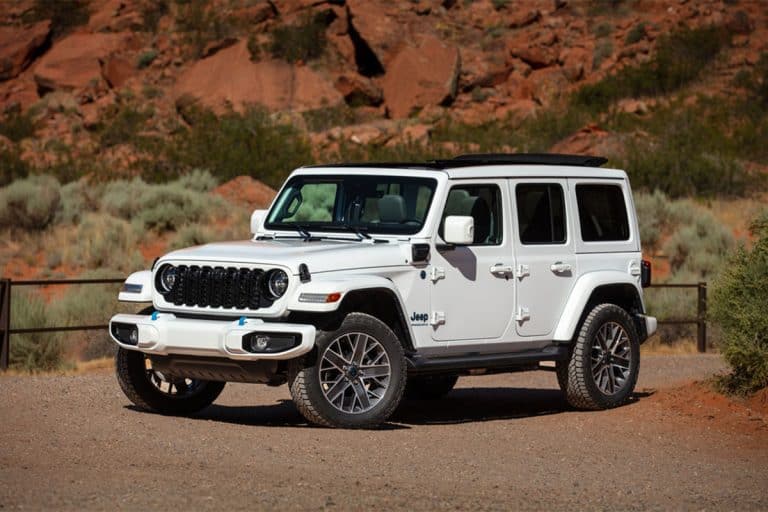
Of course, many others skip the trailer and go for a minimalist setup. An SUV is by far the preferred vehicle for such folks, as they often feature higher lift kits than Class B camper vans, letting you get deep into the wild.
The best SUV for overlanding is typically a rugged hybrid, such as a Jeep Wrangler 4xe, Toyota RAV4 hybrid or Subaru Crosstrek hybrid. What makes these stand apart isn’t only their marriage of eco-friendliness, fuel economy and hybrid practicality. They also allow for independent climate control, meaning you can stay toasty in all but the most frigid and snowy conditions.
Overlanding Setup: Setting Up Stakes in the Wild
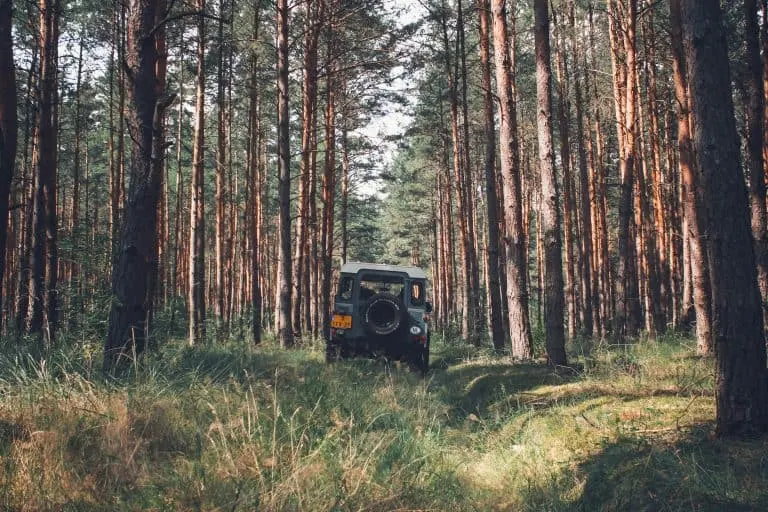
Once you land in your temporary home in the wild, the right overlanding setup provides greater comfort and security.
One of the most crucial elements is protecting against bears when in their territory. You must keep food and anything scented in a separate, bear-proof container that you can store at least 100 feet away from your camp and cooking site.
Also, be a good citizen. Even in the wilds, you’ll find established campsites already cleared with fire rings. Use these instead of creating new ones to preserve area flora. Follow leave no trace principles and strive to leave each location as you found it.
Other than that, make your temporary home as cozy as you like. A hammock takes little storage space but provides an excellent reading or napping area. A spare ground cloth doubles as a yoga mat when you clear away sharp rocks from underneath. An added safety touch for women overlanding solo is to set out two sets of chairs and a pair of large men’s boots.
What Overlanding Is
Overlanding is much more than an extended vacation. It’s a lifestyle — one that doesn’t suit everybody. However, for those with a passion for exploration, it’s the perfect way to squeeze as much adventure as possible into one lifetime by adopting a nomadic existence.
Knowing what overlanding is before leaping and considering all the pros and cons helps you make an informed decision as to whether this lifestyle is for you. If, after evaluating your options, you find the open road won’t stop calling, use this guide to set out on the adventure of a lifetime.
- The 14 Most Accessible Cities in the U.S. - April 8, 2025
- The Best Skiing in the Northeast: 15 Must-Visit Destinations - February 6, 2025
- The 15 Best East Coast Waterfalls - March 31, 2025

